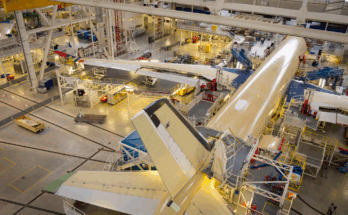
A clear grasp of the large commercial jet transport market is critical to understanding the broader dynamics reshaping the global aerospace landscape. As the world emerges from the pandemic and supply chains realign, the forces driving demand, production, and investment across this vital sector are in flux.
Record Recovery Meets Persistent Challenges
In 2024, global air passenger traffic reached an all-time high, rising 10.4% year-over-year and surpassing 2019 pre-pandemic levels by 3.8%. Load factors also hit a record, with 83.5% of available seats filled—driven as much by supply chain-constrained capacity as by robust travel demand.
Yet the path ahead is far from linear. Inflationary pressures, high interest rates, and geopolitical uncertainties—such as trade tensions and recent U.S. government layoffs—are raising questions about airline profitability and future capital spending.
A Shifting Production and Order Landscape
Airbus and Boeing remain at the heart of the market, but order cycles have normalized after a record-breaking 2023. Combined orders dropped 61.6% in 2024—still consistent with historical trends. Meanwhile, supply chain bottlenecks continue to limit Airbus’ A350 ramp-up and delay Boeing’s 777X program.
On the narrowbody front, the fierce competition between Airbus’ A320neo family and Boeing’s 737 MAX defines the single-aisle market, while the Chinese-built COMAC C919 is beginning to gain traction. In the widebody segment, Airbus’ A330neo and A350 compete with Boeing’s 787 and freighter variants.
The Long-Term Forecast: A $3.48 Trillion Market Opportunity
Forecast International projects that 20,435 large commercial jet transports will be produced globally between 2025 and 2034, representing an estimated value of $3.48 trillion (in constant 2025 dollars).
Annual production is set to climb steadily—from 1,411 aircraft in 2025 to over 2,200 units annually by the early 2030s. Airbus and Boeing are forecast to maintain their duopoly, commanding 95.6% of output, with Airbus leading in narrowbodies and Boeing in widebodies.
Connecting Macro Trends with Operational Realities
Understanding these macroeconomic trends and production forecasts is essential for everyone involved in the aerospace value chain—from OEMs and suppliers to airlines and investors. As demand recovery stabilizes and new players emerge, today’s strategic decisions will shape the market for the next decade.
📥 Ready to dive deeper?
Download the full white paper for a comprehensive analysis of production trends, aircraft program strategies, and the evolving market landscape:
👉 [Download the Full White Paper]




